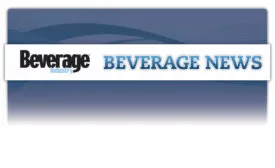Home » Keywords: » beverage sales
Items Tagged with 'beverage sales'
ARTICLES
CPG, foodservice sales continue to gain share in convenience channel
Read More
Milo's Tea targets $1B in retail sales by 2027
Refrigerated tea, lemonade company announces plans to release Zero Sugar Lemonade later this year
August 5, 2025
Special Report
Top 100 Beverage Companies of 2024
Beverage Industry identifies top performers of past year
June 5, 2025
US liquid refreshment market retail volume growth resumed in 2024
Beverage Marketing Corporation reports volume growth in 2024 reflects recovery
May 7, 2025
Circana releases mid-year 2024 food, beverage market outlook
Insights show 2023 prediction of return to growth for retail food, beverage on track
August 30, 2024
Private label sets market share records in first half of 2024
Private label beverage dollar sales up 4.3%
July 9, 2024
Special Report
Top 100 Beverage Companies of 2023
Beverage Industry identifies top performers of past year
June 10, 2024
In-store sales fuel growth for convenience store channel
Sports drinks, energy drinks witness sales increases
August 25, 2023
Top 100 Beverage Companies of 2022
Beverage Industry identifies top performers of past year
June 8, 2023
Double-digit growth of store brands continues
Beverage store brand sales up in first quarter
April 11, 2023
EVENTS
Sponsored Webinar
4/16/25 to 4/16/26
Contact: Ian
2025 State of the Industry Series: Alcoholic Beverages
Elevate your expertise in the beverage marketplace with unparalleled insights and connections.
Join thousands of beverage professionals today. Shouldn’t you know what they know?
JOIN NOW!Copyright ©2026. All Rights Reserved BNP Media.
Design, CMS, Hosting & Web Development :: ePublishing








